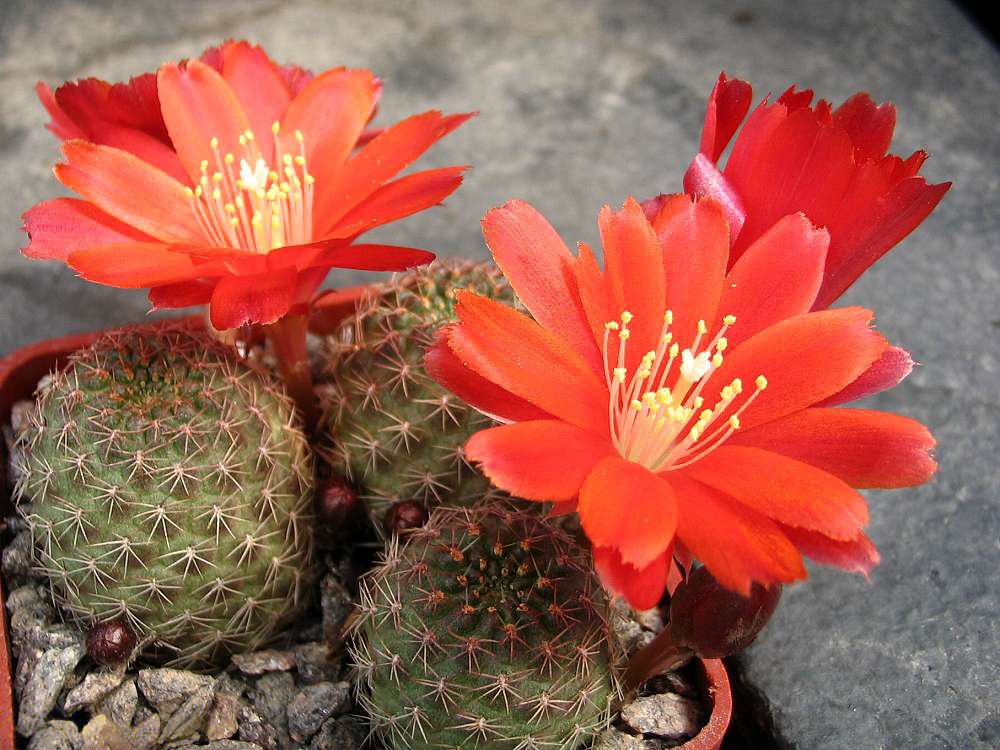Submitted by Roberta Hanna, Edited by Maria Capaldo.
Attribution: Otakar Sida, CC BY 3.0, via Wikimedia Commons
Members were given one of these at the start of the year. We are to look after it and bring it back at the December 2023 meeting (the annual Pot Luck) for comparison.
The Plant of the Year, Aylostera vulpina, was previously placed in the Rebutia genus, but with recent DNA studies, has been assigned to be Aylostera. (Lodi, 2015).
Aylostera is easily grown so it can be recommended to beginning gardeners. Aylostera vulpina is one of 30 species that are native to South America, usually found in Argentina and Bolivia. It grows in mountainous and rocky terrain, in the cracks of rocks and grooves at an altitude range of 1380 to 4300m. So, there is a high variation in temperature and a lot of clean air.
Scientific Name: Aylostera vulpina
Place of Origin: Bolivia (Chuquisaca,Tarija) and argentina (Jujuy, Salta, Catamarca).
Description: Aylostera vulpina is a small plant with globular flattened stems, forming cushions. It can form large clumps given the right conditions. Spines are needle-like with a small central spine and smaller radiating spines. The areoles have hair or bristles. The flowers are funnel shaped and usually is red-orange in color. Typically, it easily flowers in the right conditions.
Temperature: The plant prefers a hot climate with a temperature of 77- 95 degrees F in summer and can tolerate lower temperatures to 41 degrees F in the winter. In early spring, the plant can be put outdoors during the daytime, but shelter it from rain until the heat of the summer. It prefers indirect sun, but needs bright light in the summer. It prefers a constant flow of fresh air. You should gradually reduce the temperature in the room in the autumn because the cactus passes into a state of rest. Dry and cold climate with maximum lighting is maintained during the winter. If the temperature is too high in winter, the cactus will stretch and deform without flowering and numerous lateral shoots will appear.
Humidity: Cactus is sprayed with a sprayer in the hot and dry season with water of high quality. The plant should be sprayed when the sun has diminished in intensity so that burns will not appear on the surface of the cactus.
Soil: Use a ready-made Cactus and Succulent mix or prepare with equal portions of river sand, turf and leaf earth. It should be a well-drained mix.
Fertilizer: Fertilizer is added once a month during the period of active growth. A cactus fertilizer with less nitrogen. Mix: Nitrogen 9 parts, phosphorus 18 parts, potassium 25 parts. It is not necessary to fertilize in winter.
Watering: Provide watering similar to natural conditions if you are growing the plant indoors. In summer, it should be watered abundantly when the temperature in daytime is above 64 F.
The plant should be watered when the top layer of the soil is dry. The watering is gradually reduced in autumn. Water sparsely in winter. Young cacti are rarely watered in winter when their diameter does not exceed 1-2 cm. Use acidified water or rain water with a temperature of water 65-75 degrees F.
Synonyms:
Rebutia vulpina
Rebutia spegazziniana
Links to sources of information:
Also see the SCCSS Annual Plant List
